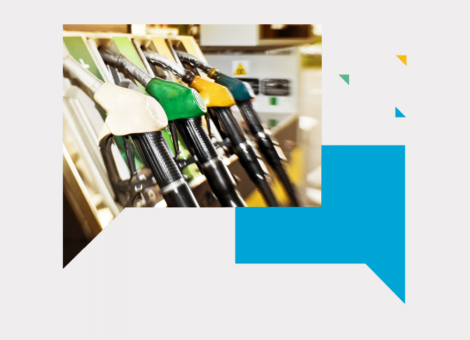In-ground cost vs replacement cost
For many pricers, choosing a price position geared towards maximizing profit, while protecting the brand, is a constant challenge. A key element of any retail price is the unit margin calculation influenced by costs and how they are reflected in the pricing system.
Choosing the inappropriate cost to calculate margin could have negative profit implications since pricing decisions are validated against unit margins. In addition, a misaligned pricing position relative to the competition will harm your brand image, causing you to leave both volume and margin on the table.
Here, we address two potential approaches to calculate unit margin using either replacement cost or in-ground cost for products with different selling characteristics.
Replacement cost
Replacement cost represents the cost of the fuel you are buying today to sell tomorrow, based on your fuel procurement contracts. As such, it reflects the most current unit margin you can expect to attain based on your current price position.
In every market, and especially restorative markets, it is the price of crude oil (and in places currency exchange rates) that triggers a price change. By not considering replacement cost during upward market movements, you risk selling fuel at a lower cost without realizing the cost of replenishing your tanks has increased significantly. Conversely, when anticipating replacement cost changes, you can understand – and often predict – trends of how and when the competition will move to ensure you don’t miss opportunities to defend profitability.
Assessing the evolution of the oil market today for tomorrow’s trading allows you to make a forecasted decision as to how retail prices are likely to trend for your competitors and your own network. Even though replacement cost is a projection, it’s a clear indication of unit margin trends, making it most suited to financial forecasting. Frequent fuel profitability forecasting is a widespread industry practice required by many organizations that like to know what to expect and plan for their future. It is usually calculated based on historical and future trends in volume and margin.
In-ground cost (aka FIFO- first in, first out)
Markets trading with accessible real-time or ‘today’s’ actual invoicing costs means FIFO becomes a key opportunity, especially if days elapse between transacting fuel orders. After consulting inventory stocks, the business can choose to buy before costs escalate, firstly trading liters bought at older (cheaper) prices.
An astute retailer will look to hedge fuel stock by anticipating when the buying price will escalate, allowing unit margins to ride through a short period of pressure by filling tanks and replenishing only as the market rescinds. The plateau will manifest, and if inventories permit the delay to order, the business can wait to replenish fuel stocks safely dodging a profit fall and with no requirement to change retail prices.
By tracking the oil (and currency) market you can actively predict unit margin fluctuations due to changing buying costs. Knowing your inventory levels and sales demand cycles, combined with in-ground unit margins, will empower you to make pricing decisions driven by your business KPIs rather than focusing solely upon the competition.
Accounting accuracy is an additional upside to adopting in-ground cost for unit margin calculations. Accurate inventory valuation provides the organization certainty when it comes to fuel assets in the financial statement.
Scenario examples
So, what does a real-world example look like? Consider two scenarios.
For fast-selling products, it is best to consider replacement cost to calculate your fuel margin and make your pricing decision since today’s prices are based on today’s costs. This will ensure that you cover the cost of refilling your tanks while making enough profit in the form of unit margin to meet your goals.
For slow-moving stores and less price-sensitive secondary grades, you can extract maximum profit by using in-ground cost. You can choose to hold retail prices, put your competitors under pressure and improve volume performance. Alternatively, follow the competition by simply maintaining your price deltas, therefore converting price increases into unit margin gains.
Unit margin with Kalibrate Pricing
Using the incorrect fuel cost to calculate unit margin when making daily pricing decisions could be costly, resulting in missed volume or profit. Or, worse, being surprised by the financial results reflected in your profit and loss statement at the end of your financial period.
Kalibrate Pricing offers fuel margin, volume, and profit analytics, enhanced by feeding and displaying multiple cost types simultaneously. Incorporating both in-ground and replacement cost paired with insights to assess volume throughput and demand cycles allows you to tailor your approach per store, per grade.
Read more articles about:
Fuel pricingSubscribe and get the latest updates
You may unsubscribe from our mailing list at any time. To understand how and why we process your data, please see our Privacy & Cookies Policy
Related posts
Fuel pricing
Pricing manually? It's a bold move
Natalie White explores the dos and don'ts of manual pricing, and why changing your settings, rather than your prices,...

Uncategorized
A closer look at art vs science in retail fuel pricing and location planning
For too long, art and science have been pitted against one another. Though Aristotle's distinction between knowledge...

